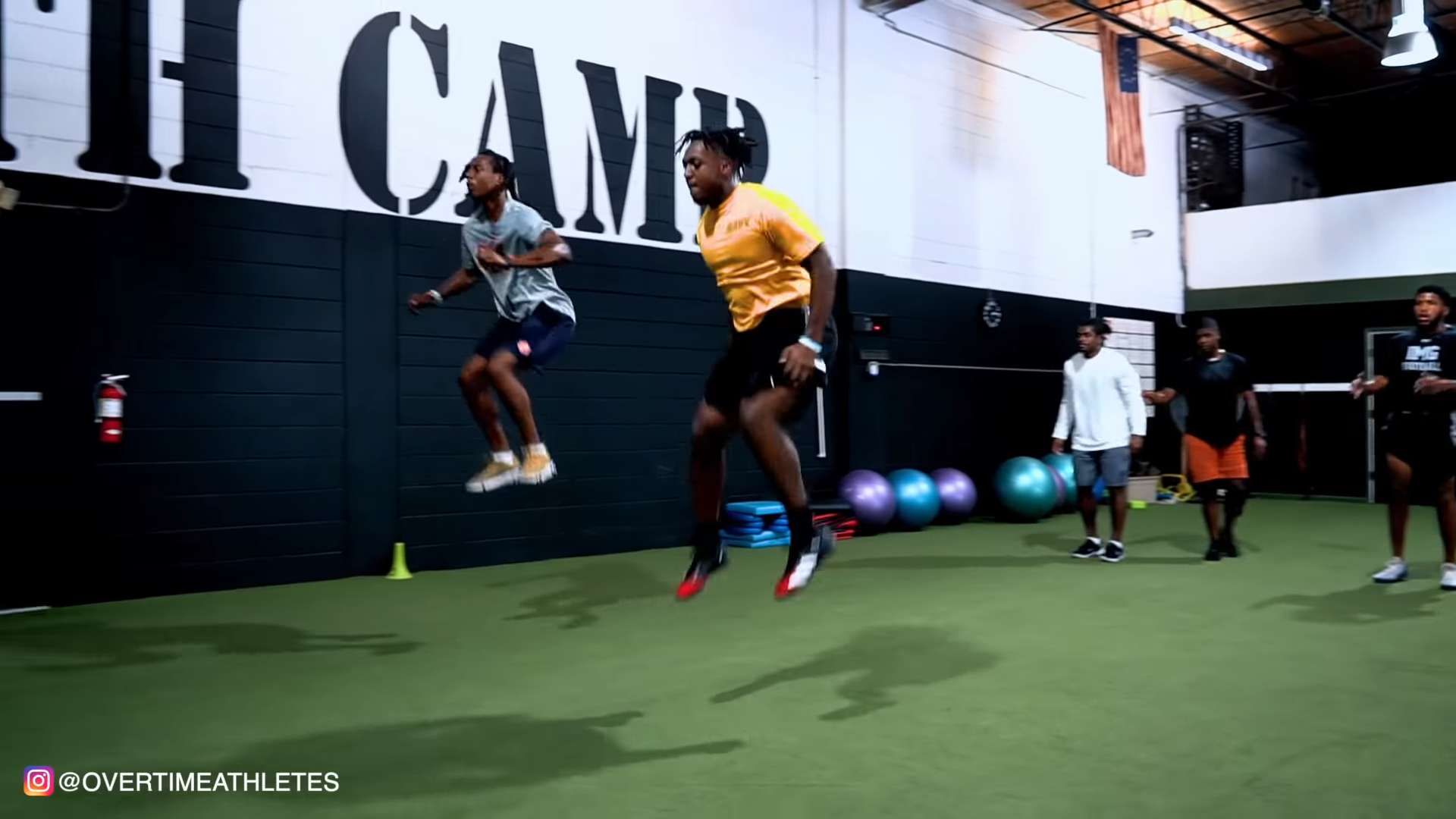We’re building on our single leg power work from the last post to dive into the single leg tuck jump. This is an intermediate to advanced drill that works on teaching you to produce power through one leg. The practice of plyometrics is essential for athletes wanting to improve their sprint and jumping ability in every aspect.
Keep reading for a little bit more about how and why I have my athletes train with the single leg tuck jump:

WHY TRAIN THE SINGLE LEG TUCK JUMP?
Single leg work is so important for athletes who are already compete and train at an intermediate or advanced. Not only does single work help to improve the strength and power of each leg individually, but it really lets you see where you may have imbalances and help to bring both sides of your body up to equal abilities. You’re only as strong as your weakest link.
I really like to have my athletes train the single leg tuck jump specifically since it helps to develop that single leg power needed to get “up and over.” This is especially important for developing good sprint technique and power. When launching into a vertical jump, you are also primarily powering up and off just one leg before takeoff so this drill helps to establish that plant and drive action.
I would recommend starting with a full warmup and then moving into a few lower level plyometrics prior to tackling the single leg tuck jump such as:
- Lateral shuffles
- Skater hops
- Lateral shuffle to two foot hop
- Short sprints
How to do the single leg tuck jump:
Begin by standing on just one leg and begin to drive the hips back into an athletic position. Prepare to drive into the ground and produce as much force as possible. When you take off and are in the air, tuck that jumping leg up into your chest. Land back on two feet, in a small squat with solid hips then recover to fully standing.
The focus should be entirely on driving off the one foot, aiming to get as much power and height as possible.
Programming
The single leg tuck jump requires a lot of skill and power so as I mentioned make sure you get a full warmup in before you start. Work on a few lower level plyometric skills first to activate the muscles of the lower leg and stabilize the hips.
Work on anywhere from 5-10 sets of 1 repetition on each leg.
To become the strongest version of yourself you’ll need…
- Plyometrics
- Absolute Strength Training Modalities
- Speed Mechanics Drill
- Elastic Strength Training Protocols
- Advanced Core Stability Training
And a bunch more.
Thousands of athletes are currently using the Athletic Speed System to receive all those tools, and sprint faster than ever before.
If you’re serious about your speed, you should probably be doing the same.
You can find more info on Athletic Speed System below: